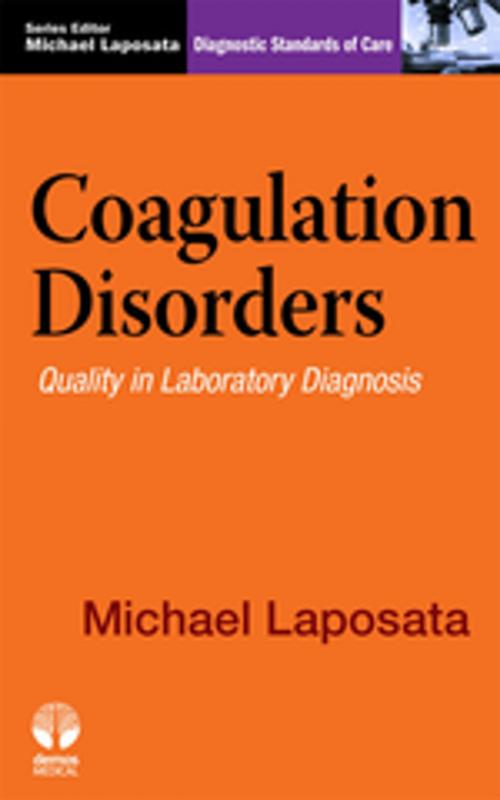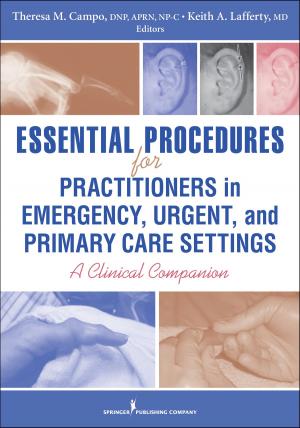Coagulation Disorders
Diagnostic Standards of Care
Nonfiction, Health & Well Being, Medical, Specialties, Pathology| Author: | ISBN: | 9781617050220 | |
| Publisher: | Springer Publishing Company | Publication: | September 17, 2010 |
| Imprint: | Demos Medical | Language: | English |
| Author: | |
| ISBN: | 9781617050220 |
| Publisher: | Springer Publishing Company |
| Publication: | September 17, 2010 |
| Imprint: | Demos Medical |
| Language: | English |
A Doody's Core Title 2012
Each day pathologists are faced with ordering laboratory tests with which they are unfamiliar. An incorrectly ordered test or error in interpreting test results can lead to mistakes that compromise patient safety.
Coagulation Disorders is designed to show clinical pathologists, lab managers, medical technologists, and residents how to avoid common errors in test selection and result interpretation in diagnostic coagulation. Utilizing a case-based approach, each chapter features a concise overview of a major diagnosis, with multiple illustrative cases, and then a list of recommended standards of care pertinent to the problem.
Just as it is essential for the practitioner in the diagnosis of bleeding and thrombotic disorders to know the appropriate course of action to establish a diagnosis or to appropriately treat a patient, it is equally essential to also know what not to do. Avoiding the mistakes is a critical first step to optimizing patient outcome and maximizing patient safety.
Features of Coagulation Disorders include:
- An emphasis on identifying established, evidence-based standards in coagulation testing
- Actual case illustrations of commonly seen errors as well as the result of those errors on patient outcome and laboratory management
- Examples of errors which compromise patient safety across all major areas of laboratory medicine
- Pocket-sized for portability
About the Series
A key issue for every laboratory and individual laboratory practitioner is the assessment of risk and a current working knowledge of the standards of care established for diagnostic testing via guidelines, major studies and trials. The Diagnostic Standards of Care series presents common errors associated with diagnoses in clinical pathology, using case examples to illustrate effective analysis based on current evidence and standards. In addition to being practical diagnostic guides, each volume demonstrates the use of quality assurance and the role of the pathologist in ensuring quality and patient safety.
A Doody's Core Title 2012
Each day pathologists are faced with ordering laboratory tests with which they are unfamiliar. An incorrectly ordered test or error in interpreting test results can lead to mistakes that compromise patient safety.
Coagulation Disorders is designed to show clinical pathologists, lab managers, medical technologists, and residents how to avoid common errors in test selection and result interpretation in diagnostic coagulation. Utilizing a case-based approach, each chapter features a concise overview of a major diagnosis, with multiple illustrative cases, and then a list of recommended standards of care pertinent to the problem.
Just as it is essential for the practitioner in the diagnosis of bleeding and thrombotic disorders to know the appropriate course of action to establish a diagnosis or to appropriately treat a patient, it is equally essential to also know what not to do. Avoiding the mistakes is a critical first step to optimizing patient outcome and maximizing patient safety.
Features of Coagulation Disorders include:
- An emphasis on identifying established, evidence-based standards in coagulation testing
- Actual case illustrations of commonly seen errors as well as the result of those errors on patient outcome and laboratory management
- Examples of errors which compromise patient safety across all major areas of laboratory medicine
- Pocket-sized for portability
About the Series
A key issue for every laboratory and individual laboratory practitioner is the assessment of risk and a current working knowledge of the standards of care established for diagnostic testing via guidelines, major studies and trials. The Diagnostic Standards of Care series presents common errors associated with diagnoses in clinical pathology, using case examples to illustrate effective analysis based on current evidence and standards. In addition to being practical diagnostic guides, each volume demonstrates the use of quality assurance and the role of the pathologist in ensuring quality and patient safety.















